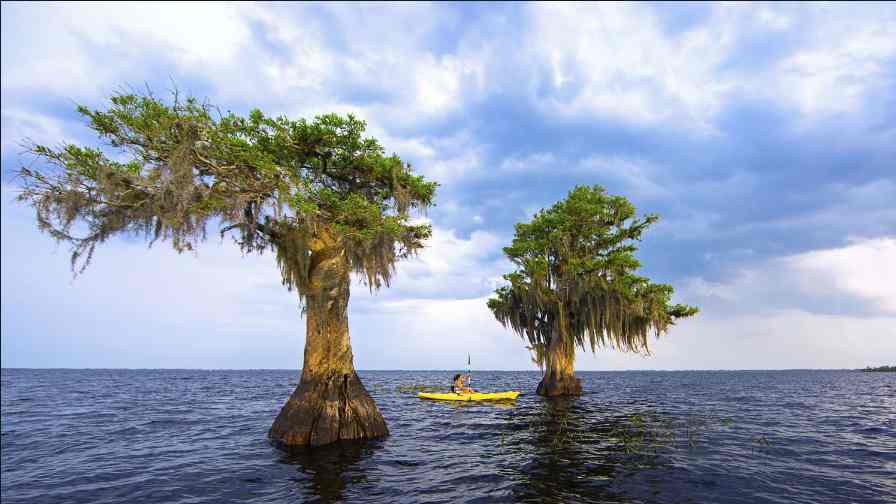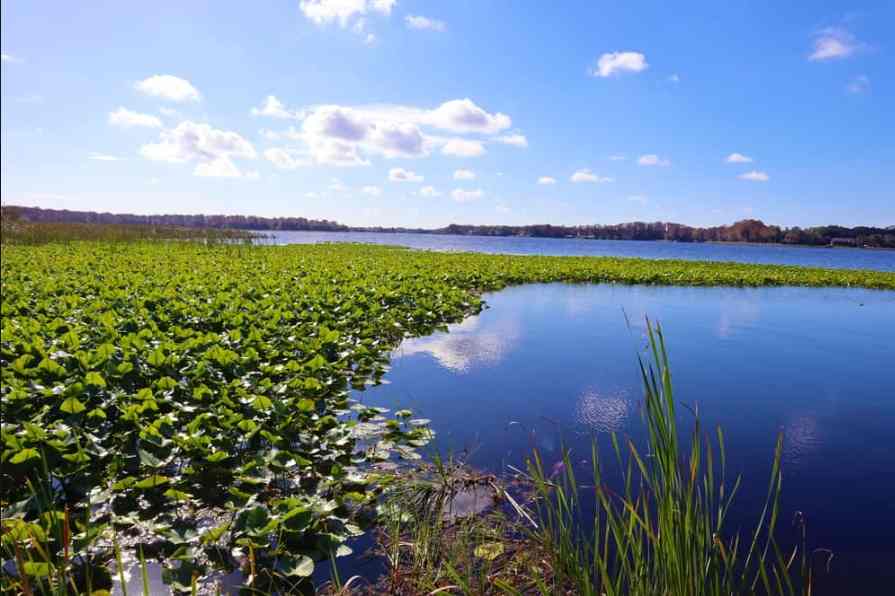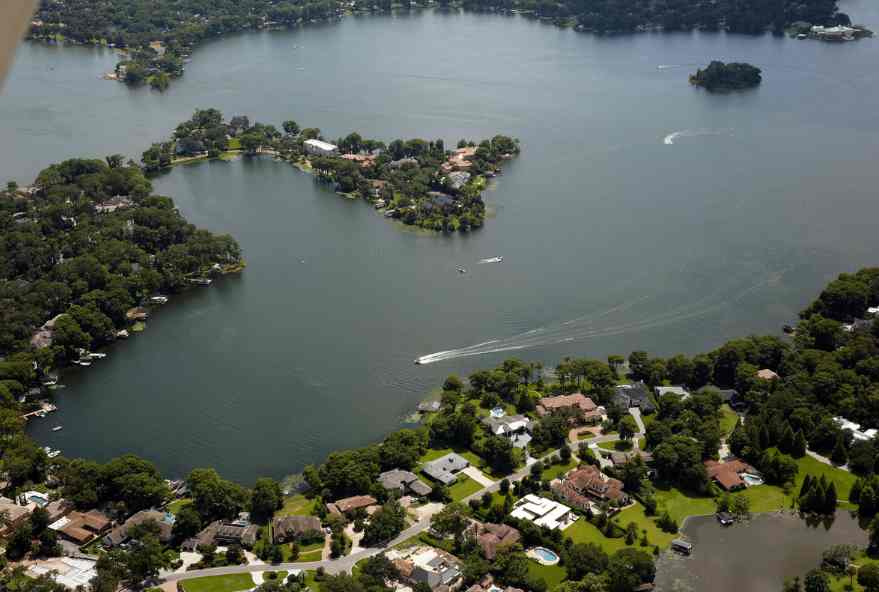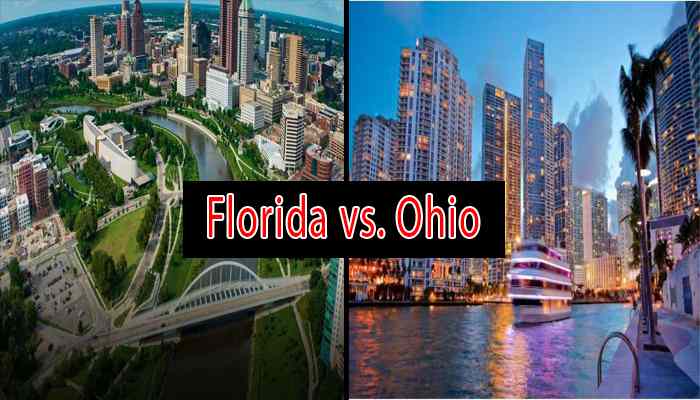Why Does Florida Have So Many Lakes?
Nestled between the Atlantic Ocean and the Gulf of Mexico, Florida, often dubbed the Sunshine State, boasts not only its world-famous beaches but also a myriad of lakes that dot its expansive landscape.
As a Floridian, I’ve always marveled at the sheer abundance of these liquid jewels and pondered the fascinating question: Why Does Florida Have So Many Lakes?
In this comprehensive exploration, we’ll delve deep into the geological intricacies, climatic influences, and human interactions that contribute to the enchanting lake-laden topography of Florida.
Geological Factors Shaping Florida’s Lake Landscape

To truly understand the genesis of Florida’s lakes, we need to peel back the layers of its geological composition. The state sits atop a vast bedrock of limestone, a porous foundation that sets the stage for the liquid wonders we see today.
This geological idiosyncrasy allows water to permeate through the bedrock, creating a delicate balance between surface and groundwater, ultimately giving rise to an abundance of lakes.
See More: Truck Driver License Florida
Why Does Florida Have So Many Lakes?

There are actually two main reasons why Florida boasts such an abundance of lakes: Hydrological and climate. Let’s dive into each:
Impact of Tropical Climate
Florida’s tropical climate, characterized by its warm temperatures and high humidity levels, plays a pivotal role in shaping the state’s lake landscape.
1. Rainfall Patterns
The state experiences a distinct wet season, typically from June to September, where torrential downpours are a common occurrence. The relentless rain not only replenishes existing lakes but also contributes to the creation of new ones.
The liquid sunshine, as we fondly call it, transforms the landscape into a waterlogged paradise, fostering the growth of these aquatic ecosystems.
2. Seasonal Changes in Water Levels
Florida’s lakes undergo a fascinating dance of expansion and contraction throughout the year. During the wet season, water levels surge, creating vast expanses of interconnected lakes.
In the dry season, the water retreats, revealing intricate ecosystems and the underlying topography. This rhythmic ballet is a testament to the intimate connection between the heavens and the lakes below.
Hydrological Processes
Delving into the hydrological intricacies unveils the secret behind Florida’s abundant lakes.
Explanation of Aquifer System
Beneath Florida’s surface lies a complex network of aquifers, subterranean limestone caverns that store immense quantities of groundwater. These aquifers not only serve as the lifeblood for Florida’s drinking water supply but also contribute significantly to the formation and sustenance of lakes.
Picture them as nature’s reservoirs, hidden beneath the surface, shaping the liquid beauty that graces Florida’s landscapes.
Surface Water Dynamics
The interconnectedness of rivers, streams, and lakes forms a hydrological symphony. Guided by the state’s gentle topography, surface water dynamics create an ever-evolving tapestry of aquatic ecosystems.
This intricate dance between land and water adds a layer of complexity to the formation and maintenance of Florida’s lakes.
Other Post: What’s The Cheapest Airport to Fly into Florida?
Natural Lakes vs. Man-Made Lakes

While nature takes the lead in shaping Florida’s lakes, human ingenuity also leaves its mark on the aquatic canvas.
Florida’s natural lakes, carved by the hands of time and geological forces, stand in stark contrast to the engineered beauty of man-made lakes. Natural lakes, with their undulating shorelines and diverse ecosystems, are a testament to the raw, untouched beauty of Florida’s landscapes.
In contrast, man-made lakes, often created for irrigation, flood control, or recreational purposes, showcase the harmonious collaboration between human needs and nature’s canvas.
Biodiversity in Florida Lakes
Florida’s lakes transcend being mere bodies of water; they are vibrant ecosystems teeming with life.
Dip beneath the surface, and you’ll discover a rich tapestry of flora and fauna. Submerged aquatic vegetation provides crucial habitat for various fish species, while wading birds gracefully navigate the shallows.
The biodiversity within these lakes is a testament to the delicate equilibrium sustained by nature, where each organism plays a vital role in maintaining the health of these aquatic realms.
Recreational Importance of Florida Lakes

Beyond their ecological significance, Florida’s lakes serve as playgrounds for recreational enthusiasts.
Picture a weekend by the lakeside, where families gather for boating adventures, anglers cast their lines into the clear waters, and water sports enthusiasts create ripples of laughter and joy.
The lakes become not just bodies of water but communal spaces where memories are forged, and the spirit of leisure intertwines with the liquid beauty of Florida.
Cultural and Historical Significance
Florida’s lakes have woven themselves into the fabric of the state’s history and culture.
For Native American communities, these lakes were sacred, providing sustenance and a spiritual connection to the land. Early settlers relied on them for transportation and irrigation, shaping the course of Florida’s development.
Today, the cultural significance of these water bodies is evident in the rituals, folklore, and traditions passed down through generations, adding depth and meaning to the liquid heritage of Florida.
Conservation Efforts

In the face of urbanization and environmental challenges, dedicated conservation efforts are vital to preserving Florida’s lakes.
Initiatives ranging from water quality monitoring to habitat restoration projects are underway, spearheaded by passionate individuals and organizations.
By becoming stewards of these invaluable ecosystems, we can ensure that Florida’s lakes continue to thrive, providing ecological balance and beauty for generations to come.
Conclusion
The multitude of lakes gracing Florida’s landscape is a masterpiece composed by geological forces, climatic intricacies, and human interactions.
From the majestic expanse of natural lakes to the purposeful design of man-made ones, each body of water narrates a unique tale.
As we navigate the liquid beauty of Florida, let us embrace our role as custodians, ensuring these lakes remain a source of wonder, recreation, and inspiration.






